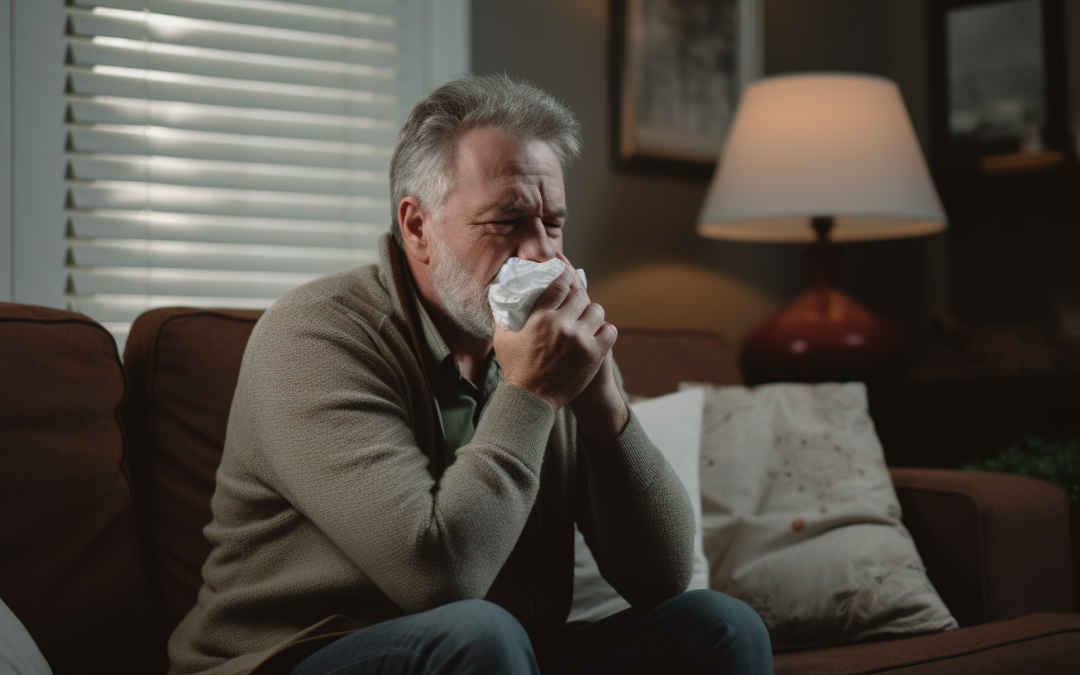Are you hesitant to exercise with a head cold?
It’s the time of year when winter hits and your immune system is suppressed.
Though your nose might be running more than your treadmill, you don’t want it to throw off your exercise routine.
If you’re wondering whether exercising with a head cold is the right decision for you, keep reading.
Exercising With a Head Cold
If the symptoms of your head cold are above the neck, like sneezing or a runny nose, light to moderate-intensity exercise is okay. It may even help relieve some of your symptoms!
Light to moderate-intensity exercises include walking, biking under 10 mph, and strength training with light weights or body weight.
As we all know, most cold symptoms are worse in the beginning.
When that cold first sets in, take it easy and try only stretching or light yoga. (Stretching can also help relieve minor aches and pains!) Wait until “below-the-neck” symptoms like chest congestion, fatigue, or fever have improved before doing light to moderate-intensity exercise.
If you do exercise with a head cold, reduce the length of your workout.
It’s important not to overdo it and make sure you get enough rest. High-intensity exercise puts extra strain on your body (1). This means your immune system has a harder time fighting off the virus. It may make your symptoms worse, and the duration of the cold longer.
Also, when you have a cold, it’s important to drink fluids to prevent dehydration. If you choose to exercise with a head cold, proper hydration is even more important!
Finally, if you are contagious, it’s best to exercise at home. You’re likely to put others at risk by going to a gym or indoor workout class.
Overall, exercise is vital because it can improve your immune system. Light to moderate-intensity exercise increases cells that fight infection and reduce inflammation(2). An increase in white blood cells can help fight off the virus that causes the common cold.
If you have a cold, be sure to pay attention to your body and listen to what it is telling you. If you ever feel exhausted or your symptoms are getting worse, rest and give your body time to recover.
(1)Recovery of the immune system after exercise. Jonathan M. Peake, Oliver Neubauer, Neil P. Walsh, and Richard J. Simpson, Journal of Applied Physiology 2017 122:5, 1077-1087
(2) da Silveira MP, da Silva Fagundes KK, Bizuti MR, Starck É, Rossi RC, de Resende E Silva DT. Physical exercise as a tool to help the immune system against COVID-19: an integrative review of the current literature. Clin Exp Med. 2021 Feb;21(1):15-28. doi: 10.1007/s10238-020-00650-3. Epub 2020 Jul 29. PMID: 32728975; PMCID: PMC7387807.
Want to get moving, but not sure where to start?
Starting an exercise routine doesn't have to be stressful or exhausting. Feel and move your best with indi's Physical Therapist-designed programs that won't leave you worn out or injured.
Click the button below to start your free 14-day trial:

